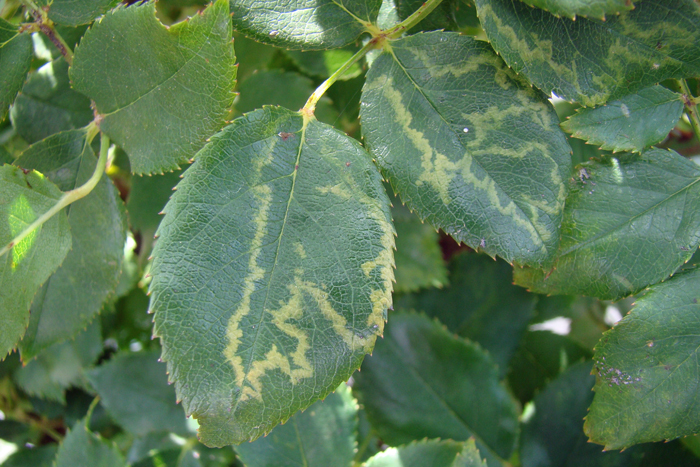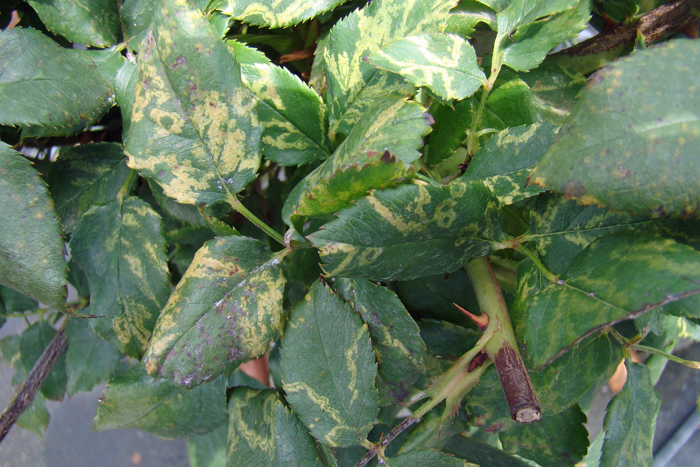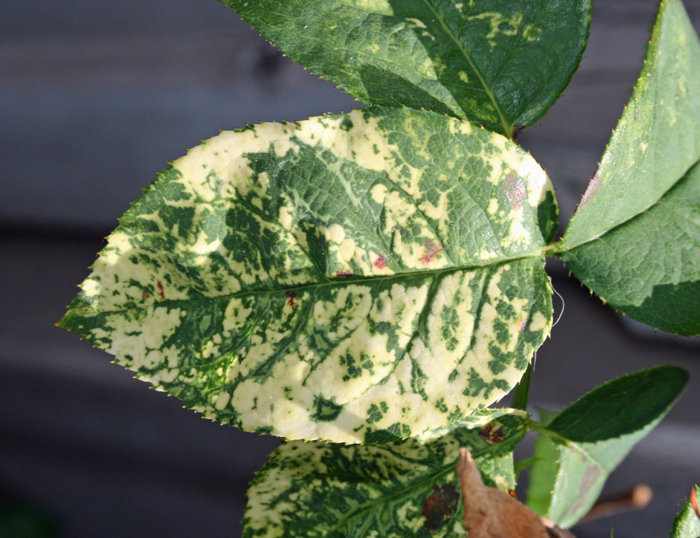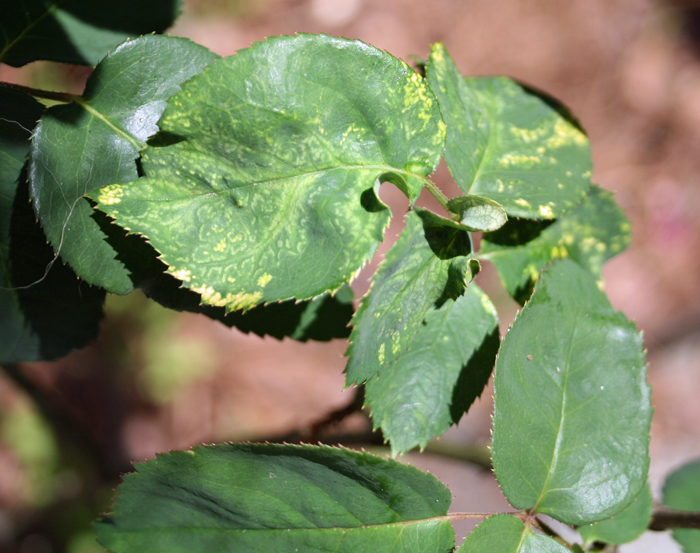Mathews Paret, Plant Pathologist, NFREC, University of Florida, Gary Knox, Horticulturist, NFREC, University of Florida, & Binoy Babu, Post-Doctoral Fellow, NFREC, University of Florida
Roses are one of the most popular flowering shrubs in the U.S with a wholesale value of $194 million. Florida is the fourth largest producer of roses, with over $20 million in annual sales. Among the virus diseases affecting roses, Rose mosaic disease (RMD) is one of the most important. Prunus necrotic ringspot virus and Apple mosaic virus are the two most common viruses that have been reported to cause RMD. This disease continues to be a major problem in nursery production and landscapes in 2014, leading to major losses in the marketability of roses from Florida and Georgia nurseries.
The symptoms of RMD are highly variable and can include chlorotic line patterns (Fig.1), bleached appearance of the leaves (Fig. 2), blotches on the leaves (Fig. 3), ring spots (Fig. 4), and mottling and distortion of leaves (Fig. 5). Symptom severity can vary during different times of the year, and the peak period for severity this year has been from June-August in North Florida. RMD is known to reduce flower production and plant growth, and also a reduced life span of rose plants.
Key points for prevention and management
- Always, start with clean stock plants and ideally, virus-indexed stock. However, be aware that RMD has been reported from healthy virus-indexed material in the past. The reason of why RMD is found in certified virus-free planting stock is not yet known.
- Even though there is no clear evidence on the potential transmission of the viruses causing RMD through pruning equipment or knives, it is important to sanitize equipment consistently when working with roses, to minimize any potential risks.
- Field-to-field spread of RMD has not been definitively determined yet; however, potential for transmission of viruses causing RMD through natural root grafting between closely spaced plants is a possibility, as indicated in a previous study by Golino et al. in 2007.
- Commercial nurseries should remove infected plants immediately, as a single infected plant in an entire shipment can lead to rejection of the supply, and could be a risk to other plants in production (even though modes of disease spread have not been definitively proven yet).
- Mathews Paret Promoted to University of Florida Plant Pathology Department Chair - July 28, 2023
- Field Performance of Plant Protectants against Bacterial Leaf Spot on Watermelon - February 11, 2022
- Using Scouting and Diagnostic Confirmation to Improve Watermelon Spray Programs in North Florida - September 25, 2020





